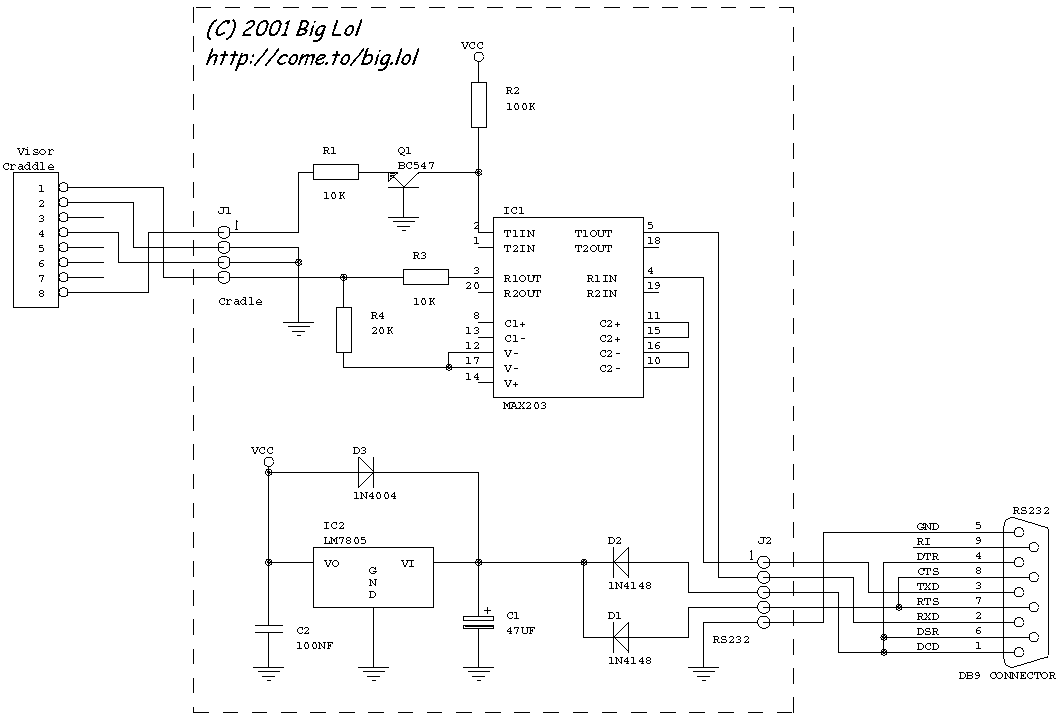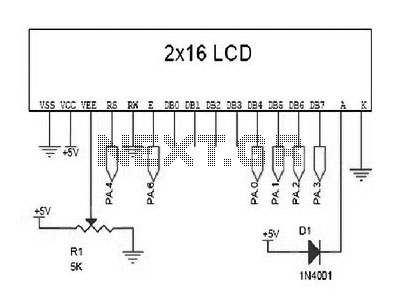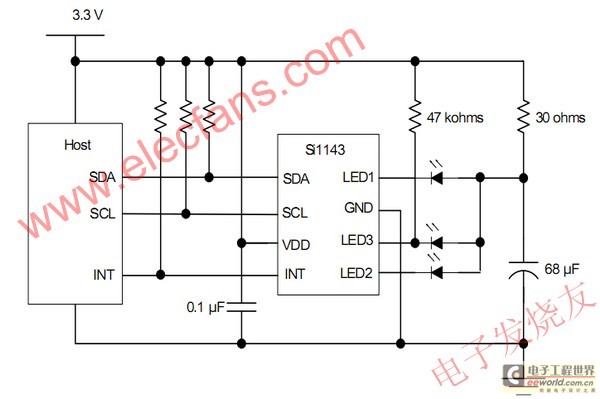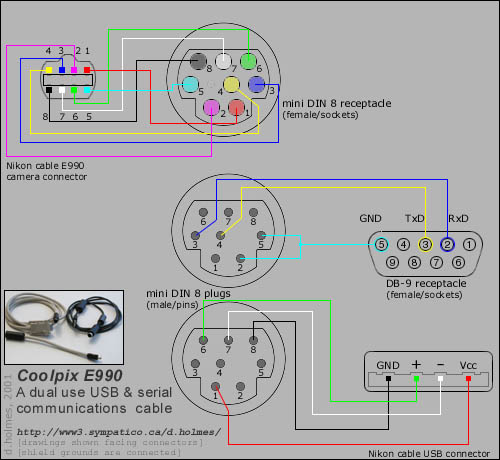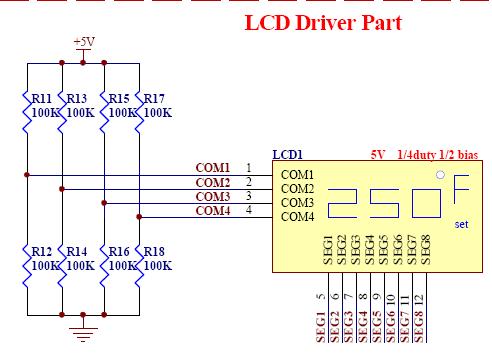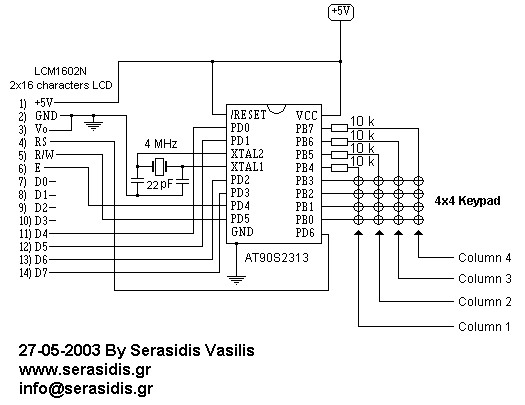
LCD Serial Terminal
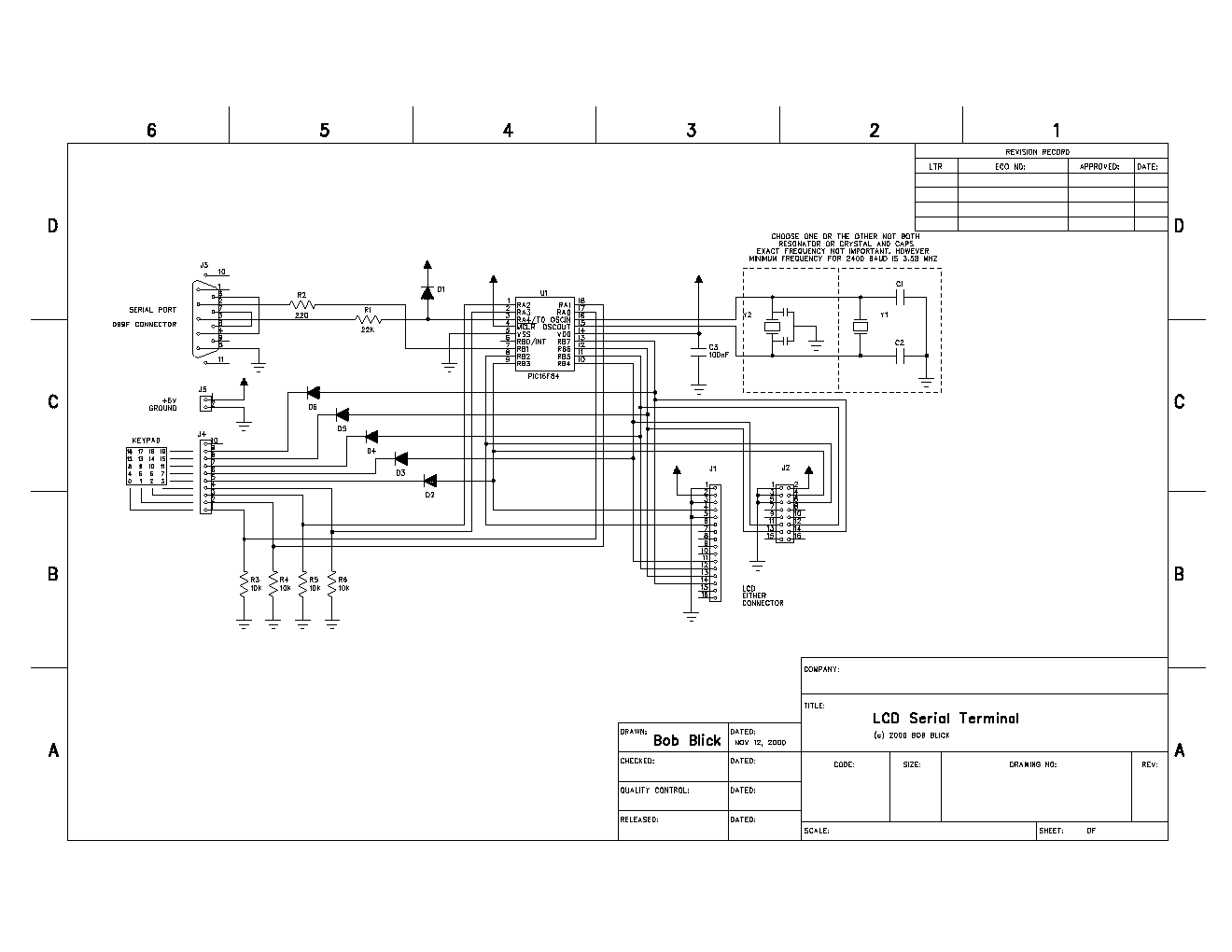
This project is a self-contained serial terminal using a PIC16F84 microcontroller chip, an inexpensive LCD character display, a keypad, and very little else. It is full-duplex, meaning keypresses cause RS-232 output, and RS-232 input makes characters appear on the LCD. If you connect the RS-232 output to the input you can see the keys as you press them, without connecting to anything else (that's called looping back). More: The picture above doesn't show the electronics, just a keypad and LCD display. The electronics is on a small board behind the LCD. This LCD is a 4 line by 20 character intelligent LCD display. Displays from 1x8 to 4x20 or 2x40 and pretty much anything.
The project described is a compact serial terminal utilizing a PIC16F84 microcontroller, which serves as the central processing unit. The microcontroller is programmed to handle input from a keypad and output to an LCD display, facilitating a user-friendly interface for serial communication.
The LCD character display used in this circuit is a 4x20 intelligent model, capable of showing up to 80 characters at once. This feature allows for extensive data representation and user interaction. The display operates in conjunction with the microcontroller to render characters based on the serial data received via RS-232 communication.
The full-duplex capability of this terminal is a critical feature, enabling simultaneous data transmission and reception. When a key is pressed on the keypad, the microcontroller detects the input and immediately sends the corresponding character to the RS-232 output. This output can be looped back to the RS-232 input, allowing for real-time visual feedback on the LCD display. This functionality is particularly useful for debugging and testing purposes, as it enables the user to verify that the keypresses are being correctly interpreted and transmitted.
The circuit design includes a minimal number of components, primarily focusing on the microcontroller, keypad, and LCD, which simplifies the assembly and reduces costs. The keypad typically consists of a matrix layout, where rows and columns are scanned by the microcontroller to detect which key has been pressed.
Power supply requirements for this project should be considered, as the PIC16F84 and the LCD display will need a stable voltage source, typically around 5V. Decoupling capacitors may be included in the design to ensure stable operation of the microcontroller.
Overall, this project exemplifies an efficient design for a serial terminal, leveraging simple components to achieve effective communication and display capabilities, making it suitable for various applications in electronics and embedded systems.This project is a self-contained serial terminal using a PIC16F84 microcontroller chip, an inexpensive LCD character display, a keypad, and very little else. It is full-duplex, meaning keypresses cause RS-232 output, and RS-232 input makes characters appear on the LCD.
If you connect the RS-232 output to the input you can see the keys as you press them, without connecting to anything else (thats called looping back). The picture above doesnt show the electronics, just a keypad and LCD display. The electronics is on a small board behind the LCD. This LCD is a 4 line by 20 character intelligent LCD display. Displays from 1x8 to 4x20 or 2x40 and pretty much anyth 🔗 External reference
The project described is a compact serial terminal utilizing a PIC16F84 microcontroller, which serves as the central processing unit. The microcontroller is programmed to handle input from a keypad and output to an LCD display, facilitating a user-friendly interface for serial communication.
The LCD character display used in this circuit is a 4x20 intelligent model, capable of showing up to 80 characters at once. This feature allows for extensive data representation and user interaction. The display operates in conjunction with the microcontroller to render characters based on the serial data received via RS-232 communication.
The full-duplex capability of this terminal is a critical feature, enabling simultaneous data transmission and reception. When a key is pressed on the keypad, the microcontroller detects the input and immediately sends the corresponding character to the RS-232 output. This output can be looped back to the RS-232 input, allowing for real-time visual feedback on the LCD display. This functionality is particularly useful for debugging and testing purposes, as it enables the user to verify that the keypresses are being correctly interpreted and transmitted.
The circuit design includes a minimal number of components, primarily focusing on the microcontroller, keypad, and LCD, which simplifies the assembly and reduces costs. The keypad typically consists of a matrix layout, where rows and columns are scanned by the microcontroller to detect which key has been pressed.
Power supply requirements for this project should be considered, as the PIC16F84 and the LCD display will need a stable voltage source, typically around 5V. Decoupling capacitors may be included in the design to ensure stable operation of the microcontroller.
Overall, this project exemplifies an efficient design for a serial terminal, leveraging simple components to achieve effective communication and display capabilities, making it suitable for various applications in electronics and embedded systems.This project is a self-contained serial terminal using a PIC16F84 microcontroller chip, an inexpensive LCD character display, a keypad, and very little else. It is full-duplex, meaning keypresses cause RS-232 output, and RS-232 input makes characters appear on the LCD.
If you connect the RS-232 output to the input you can see the keys as you press them, without connecting to anything else (thats called looping back). The picture above doesnt show the electronics, just a keypad and LCD display. The electronics is on a small board behind the LCD. This LCD is a 4 line by 20 character intelligent LCD display. Displays from 1x8 to 4x20 or 2x40 and pretty much anyth 🔗 External reference
